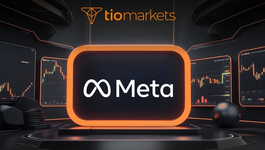3 Technical Indicators Every Forex Trader Should Know
BY Chris Andreou
|November 3, 2020When trading forex, it’s important to have a number of reliable tools and methods of analysis in your armoury.
Fundamental analysis is an important first step in understanding the markets and what influences the price of certain assets. But technical analysis plays an equal and increasingly important role in validating fundamental analysis and predicting future price action.
Part of the reason that technical indicators are so important is because they’re used by some of the biggest institutional players in the world, including major banks and hedge funds. Because so much volume is bought and sold based on technical indicators, the indicators become a self-fulfilling prophecy of sorts. If for no other reason, they work because the biggest buyers and sellers in the world believe they work.
Let’s look at three of the most important technical indicators you’ll need to know to get you off to a flying start in your technical analysis game.
The Simple Moving Average
The moving average is perhaps the most popular technical indicator of all. It’s easy to set up, easy to understand and easy to use.
In simple terms, the moving average indicator represents the average closing price of a symbol over a specific period of time. It appears as a line graph that’s overlaid on top of the price chart.
This indicator is used to “flatten” the overall picture of the market in order to get a clearer picture of momentum. As prices can often appear choppy, especially when looking at a candlestick chart, the moving average gives a simplified view of the “big picture”, which helps traders identify, confirm and follow a market trend.
How Is A Moving Average Calculated?
Let’s say you set a 14 period moving average over a 1-hour chart. Every hour, the moving average line will be plotted using the mean of the closing price of the last 14 hours.
At every interval (1 hour), the points of the line are recalculated, omitting the oldest value in favour of the most recent value.
The indicator can be used for a number of purposes.
Support and Resistance
One of the main uses of the moving average is to determine a symbol’s support and resistance levels. The Moving Average (MA) can be a good indicator of where these levels lay.
Let’s say the GBP/USD increased over a ten-day period, and then suddenly retraced some of its gains. The moving average would appear below the current price, and the price itself might likely find strong support once it touches the 50-day moving average.
It’s best to try different periods of moving averages for each symbol to see which period is offering the most highly-correlated support or resistance levels.
Trading Strategy
There are many trading strategies that you can use with moving averages.
One of the most popular is the MA crossover strategy. Take for example the 14-day MA and the 30-day MA. When the lines of each MA cross at any point on the chart, these can be seen as long or short signals.
When the 14-day MA crosses above the 30-day MA, it’s seen as a buy signal. When the reverse is true, when the 14-day MA crosses below the 30-day MA, this is seen as a sell signal.
This strategy is popular for those looking to identify the beginning of a trend. Depending on the number of periods you choose for your MA calculations, this could be short or long term trends. The higher the number on your MAs, the longer the trend you’re identifying.
This image shows a “golden cross”, where the 50 MA (red) crosses above the 200 MA (green). This would be interpreted as a buy signal. In this case, the trend does indeed continue upwards.
Bollinger Bands
No list of the best trading indicators would be complete without mention of bollinger bands.
Named after its creator John Bollinger, the indicator attempts to detect “overbought” and “oversold” markets.
An overbought market refers to a period of time where there has been a consistent upward movement in price, without much pullback. Likewise, an oversold market refers to a consistent period of time of downward price movement without much retracement to the upside.
Entering positions in overbought or oversold conditions is a popular way to choose an entry point, because the trader is operating on the assumption that prices, especially in forex, can’t rise or fall forever, and that there has to be a correction at some point.
So what does the bollinger band have to do with all of this?
The indicator is made up of 3 lines: a simple moving average in the middle (usually a 20 period MA by default), an upper band and a lower band. The bands are placed 2 standard deviations away from the moving average, which estimates that around 95% of price movement will be between the bands.
In general terms, price is considered overbought when it touches the upper band and oversold when it touches the lower band. Price contact with these bands is meant to signal a likely imminent reversal.
When price begins to touch the upper band, this is meant to signal an upcoming downward movement, and when it touches the lower band, it’s meant to signal an upcoming price increase.
Another common strategy is to use the day’s close price of an asset with the bollinger band. If the asset closes above the top band for the day, this can be read as a signal to go long, as it is said to have broken a key resistance level. On the other hand, if the price closes below the bottom band, this can be read as a signal to go short.
The width of the band will depend on market volatility. In a narrow-range market, the bands will be close together, while more volatile asset pairs will have bands that are further apart.
Fibonacci Retracement
The third indicator we’ll be looking at today is also the most fun sounding: Fibonacci Retracement.
It’s named after the italian mathematician Fibonacci, also known as Leonardo Bonacci, who posed a rhetorical problem involving the rapid growth of a population of rabbits and answered it using the now famous Fibonacci sequence.
The Fibonacci series is now used in everything from graphic design (referred to as the “golden ratio”) to trading.
The Fibonacci sequence begins with 0 and 1, and each subsequent number is created by adding the previous two numbers.
The result is a sequence that looks like this: 0, 1, 1, 2, 3, 5, 8, 13, 21, 34, 55, etc.
In the form of the popular technical indicator, it is used to pick out support, resistance and retracement levels. It’s displayed as a series of horizontal lines (retracements) which are drawn according to the Fibonacci sequence in mathematics. Each line on the indicator can represent an entry or exit point.
The trading indicator uses the relative percentages between these numbers. Every number in the sequence is around 61.8% of the next number, 38.2% of the following number, and 23.6% of the number after that. The Fibonacci uses these levels in between the numbers 0 and 100, and adds the 50% level into the mix as well.
To add a Fibonacci indicator to a chart, a trader will identify a low point and a high point on the chart, regardless of whether the price is moving up or down. They will then draw the indicator from one point to the other, thus producing the lines we see below.
From the 0 level on the indicator, traders will look for a price retracement, and each line on the indicator represents a different target. The 61.8% line is generally considered the most important line of the series.
All lines represent price targets, and depending on where the price is at any point in time, can also represent support and resistance levels where prices may tend to hover for extended periods of time.
There’s no way to tell for certain, but anecdotal evidence suggests the Fibonnaci retracement tool may be the most popular amongst professional traders.
You’ll find each of the indicators we’ve looked at in your MT4 and MT5 trading platform from the “Insert” menu.
And remember, even with the sharpest knowledge of indicators, you need a secure, reliable and low-cost broker if you want to make profit from trading.
TIOmarkets offers the world’s leading platforms with all the indicators you could ever need, and some of the most competitive trading conditions you’ll find anywhere.
Risk disclaimer: CFDs are complex instruments and come with a high risk of losing money rapidly due to leverage. You should consider whether you understand how CFDs work and whether you can afford to take the high risk of losing your money. Never deposit more than you are prepared to lose. Professional client’s losses can exceed their deposit. Please see our risk warning policy and seek independent professional advice if you do not fully understand. This information is not directed or intended for distribution to or use by residents of certain countries/jurisdictions including, but not limited to, USA & OFAC. The Company holds the right to alter the aforementioned list of countries at its own discretion.
Join us on social media

Experienced independent trader
Related Posts





